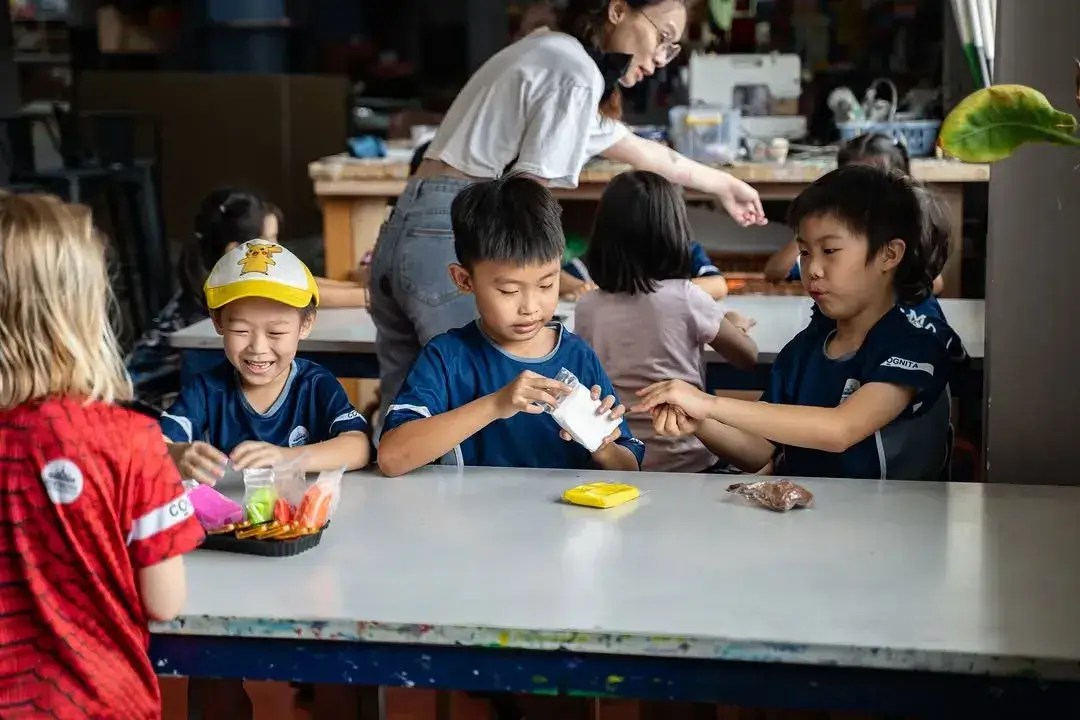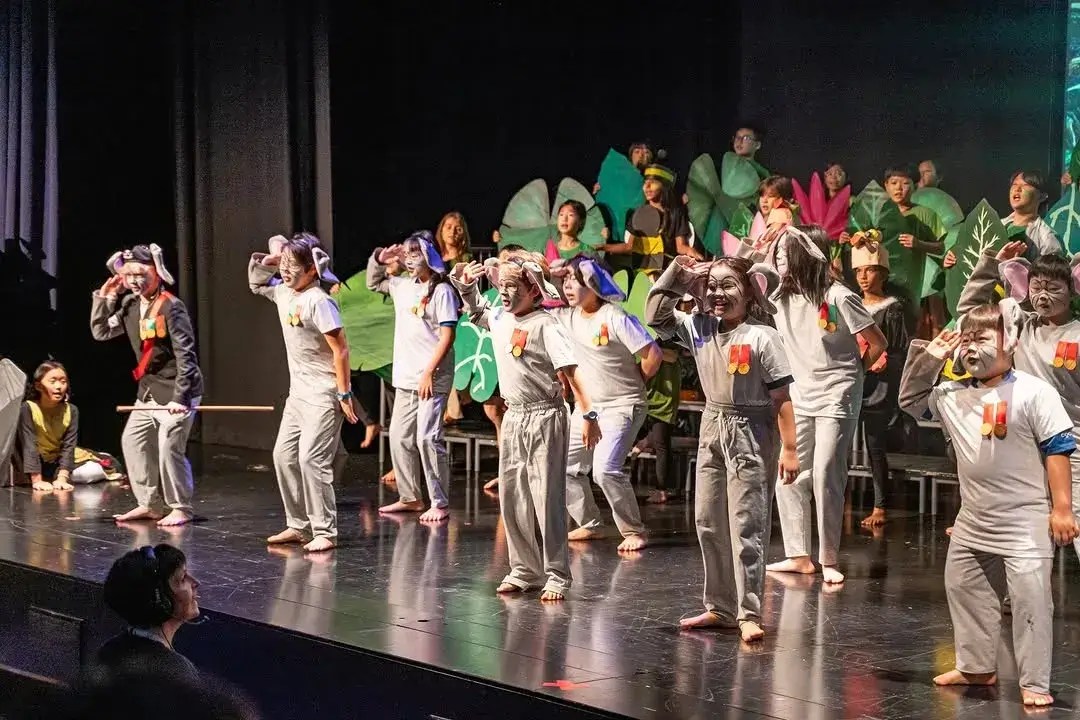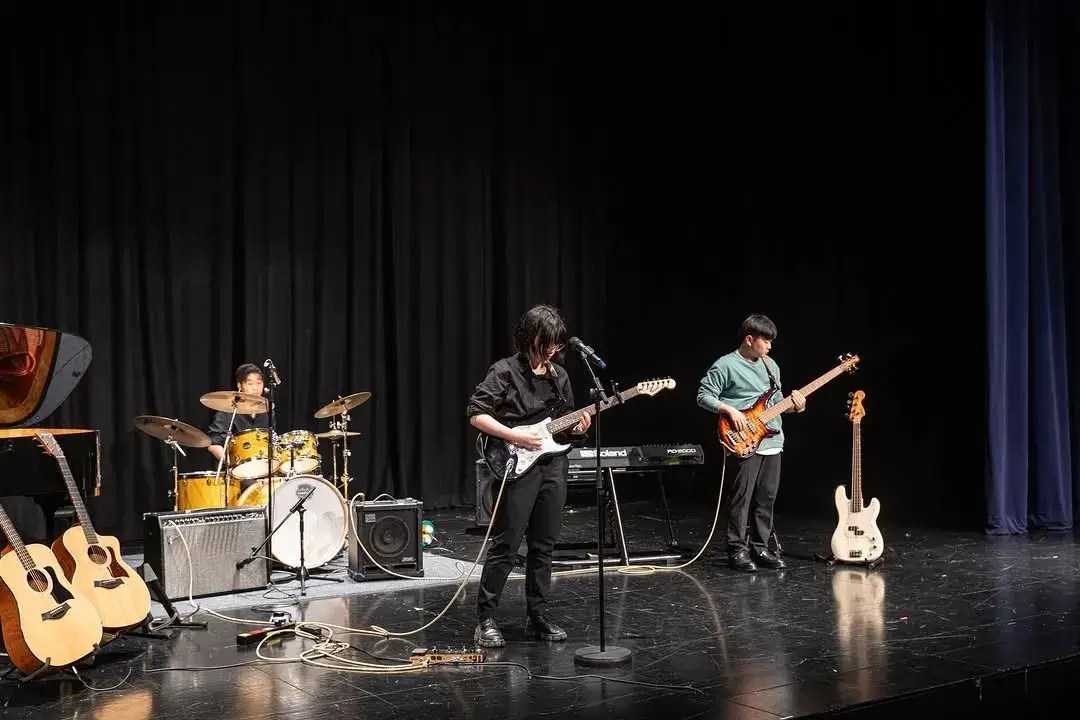What is Arts Integration in the Classroom? Benefits, Strategies & Real-World Examples
Arts integration in education is transforming how students learn, helping them connect academic content with creative expression. By combining subjects like math, science, literacy, and history with visual arts, music, drama, and movement, learners engage on a deeper intellectual, emotional, and social level.
Forward-thinking schools use this method to cultivate confident, expressive learners who can apply what they learn in class to real-world situations. Practically, the International School Ho Chi Minh City (ISHCMC) integrates this methodology into the International Baccalaureate (IB) framework to foster inquiry, creativity, and real-world application.
What is Arts Integration?
Arts integration purposefully combines academic learning with creative expression. Students engage with curriculum content through visual arts, music, drama, or movement, using the arts as a medium to explore, understand, and communicate ideas. This approach strengthens comprehension and makes learning more dynamic, meaningful, and relevant.
A teacher might ask students to:
- Choreograph a sequence to explain the food chain.
- Illustrate key moments in a story using visual art.
- Write and perform scenes that explore historical events or scientific theories.
This method encourages active participation and supports deeper retention, aligning with ISHCMC’s commitment to interdisciplinary learning. Lessons become interactive, relatable, and engaging. For example, ISHCMC students might choreograph a sequence to explain the food chain, illustrate key moments in a story using visual art, or write and perform scenes that explore historical events or scientific theories.
Benefits of Arts Integration in the Classroom
Arts integration offers tangible benefits that support academic growth and personal development. Here are some ways it impacts students.
Increases Focus and Motivation
Creative activities keep students engaged. Students stay alert and interested when learning involves rhythm, color, movement, or storytelling. They connect emotionally with the subject, driving curiosity and concentration.
Builds Deeper Understanding
Reimagining academic content through creative tasks strengthens memory and comprehension. Students process information visually, physically, and socially, which leads to greater understanding and longer-term retention.

ISHCMC’s transdisciplinary approach in the Primary Years Programme and interdisciplinary projects in the Middle Years Programme allow students to explore topics through scientific, cultural, and artistic lenses. For example, students have expressed understanding of environmental systems through visual installations and theatrical presentations, reinforcing core content while encouraging personal interpretation.
Develops Collaboration and Empathy
Group-based projects and performances teach students to communicate clearly, listen actively, and respect diverse perspectives. These experiences build trust, confidence, and teamwork, critical skills for lifelong success.

At ISHCMC, collaboration is deeply embedded in the classroom culture. The open-layout design of Primary classrooms and student-led exhibitions encourages students to listen, support one another, and express ideas respectfully. These experiences reflect ISHCMC’s core value of empathy and its goal to develop compassionate, globally minded learners.
Encourages Independent Thinking
Students who learn through the arts intend to make more independent choices, take creative risks, and solve problems from new angles. Arts integration supports critical thinking by pushing learners to evaluate, reflect, and adapt.
Supports Inclusive Classrooms
Arts-integrated lessons allow students with different learning preferences to succeed. Whether through visuals, movement, or sound, students can engage with material in a way that suits their individual strengths.
ISHCMC celebrates diversity in language, learning styles, and cultural backgrounds. Arts integration offers every student an entry point into the learning experience. Students express themselves through music, movement, visual art, and media in ways that honor their strengths. The school’s personalized learning model ensures that each child can explore complex ideas and feel seen, heard, and supported throughout the process.
Best Practices for Arts Integration in the Classroom
Arts integration works best when it’s intentional, focused, and aligned with learning outcomes. For parents evaluating international education options, understanding how schools implement this strategy offers valuable insight into the learning environment your child might experience.
Align Arts with Learning Goals
Art-based tasks should reinforce specific academic objectives. For example, asking students to design posters about ecosystems can help them visualize food webs, predator-prey relationships, and energy flow.
International schools that follow the IB framework, such as those offering the Primary Years Programme (PYP) and Middle Years Programme (MYP), often weave artistic expression directly into unit plans. This allows students to grasp abstract concepts through hands-on, visual, and auditory methods—ultimately making lessons more memorable and meaningful.
Build Interdisciplinary Collaboration
Collaboration between teachers from different subject areas brings greater depth to classroom learning. For example, a history lesson on civil rights becomes more impactful when paired with a music lesson exploring protest songs from the same era. This kind of interdisciplinary planning helps students connect concepts across subjects, rather than viewing each one in isolation.
Let Students Take Ownership
Offer students a choice in how they demonstrate their learning. Some might prefer digital storytelling, others might choose visual arts, theater, or music. This flexibility boosts engagement and motivation.

Encouraging creativity also supports important skills like time management, self-direction, and resilience. These are all part of the Approaches to Learning (ATL) skills framework promoted in many international programs, including the IB.
Use Varied Assessment Methods
Creative assessment tools—such as performance rubrics, portfolios, and presentations—can measure understanding as effectively as traditional tests. They also provide a clearer picture of student progress and creativity. ISHCMC educators actively support this reflection, recognizing the unique learning journey of each child.
Arts Integration at ISHCMC: Creativity in Action
Teachers bring learning to life by weaving the arts into different subjects through practical, flexible techniques. Here are some examples:
- Science & Movement: Students use body movements to model cell functions or mimic natural processes like evaporation and condensation.
- Math & Visual Arts: Geometry lessons come to life when students draw tessellations or build structures with accurate angles and symmetry. In Primary Years Programme (PYP) inquiry units, students apply measurement and spatial reasoning while creating artistic works.
- Language Arts & Theater: Students dramatize scenes from novels or write their own monologues to explore character perspectives.
- History & Music: Learners analyze a period of history by composing soundtracks that reflect different events or emotions. In the Middle Years Programme (MYP), students connect historical understanding with creativity by analyzing cultural events through music.
- Second Languages & Illustration: Students create illustrated storybooks to reinforce vocabulary and sentence structure.
These activities help bridge abstract concepts with concrete understanding, making learning more accessible and memorable.
Discover How ISHCMC Inspires Creative, Confident Learners
At the International School Ho Chi Minh City, arts integration is a core part of the student journey. From Early Childhood to the International Baccalaureate Diploma Programme, students explore and express ideas through visual arts, design, music, and drama. These disciplines are fully integrated into inquiry-led units and cross-curricular projects.
Students don’t just absorb knowledge—they explore it, reshape it, and communicate it. At every stage, the arts help learners develop the confidence, empathy, and creativity they need to lead with purpose.
Explore a school where creativity shapes academic excellence—and where students grow into articulate, globally minded learners.
